Want to use ChatGPT as a blogging tool? Professional writer, Ralph Grayden, shows you how you can harness the power of AI to write quality blog articles more efficiently.
ChatGPT can write a great blog; it can also write a terrible one. What it produces for you depends on how you use it.
In this step-by-step guide, I show you how you can get ChatGPT to write an effective blog article, including using it to generate ideas, structure your work and, ultimately, get the best words down.
Step 1. Use ChatGPT to generate some initial ideas
There are hundreds of ways to generate blog ideas with ChatGPT (I’ll be writing another whole blog about it soon). However, the most straightforward one is simply to feed it keywords and ask it to start suggesting topics. You can push the boat out a little further by asking it to link seemingly unrelated ideas or keywords.
| Example prompt: Link these 3 keywords together in 9 different blog ideas: “X”, “Y”, and “Z”. Make 3 ideas conventional, 3 ideas dynamic and for the final 3, really push the boat out and come up with something unique. |
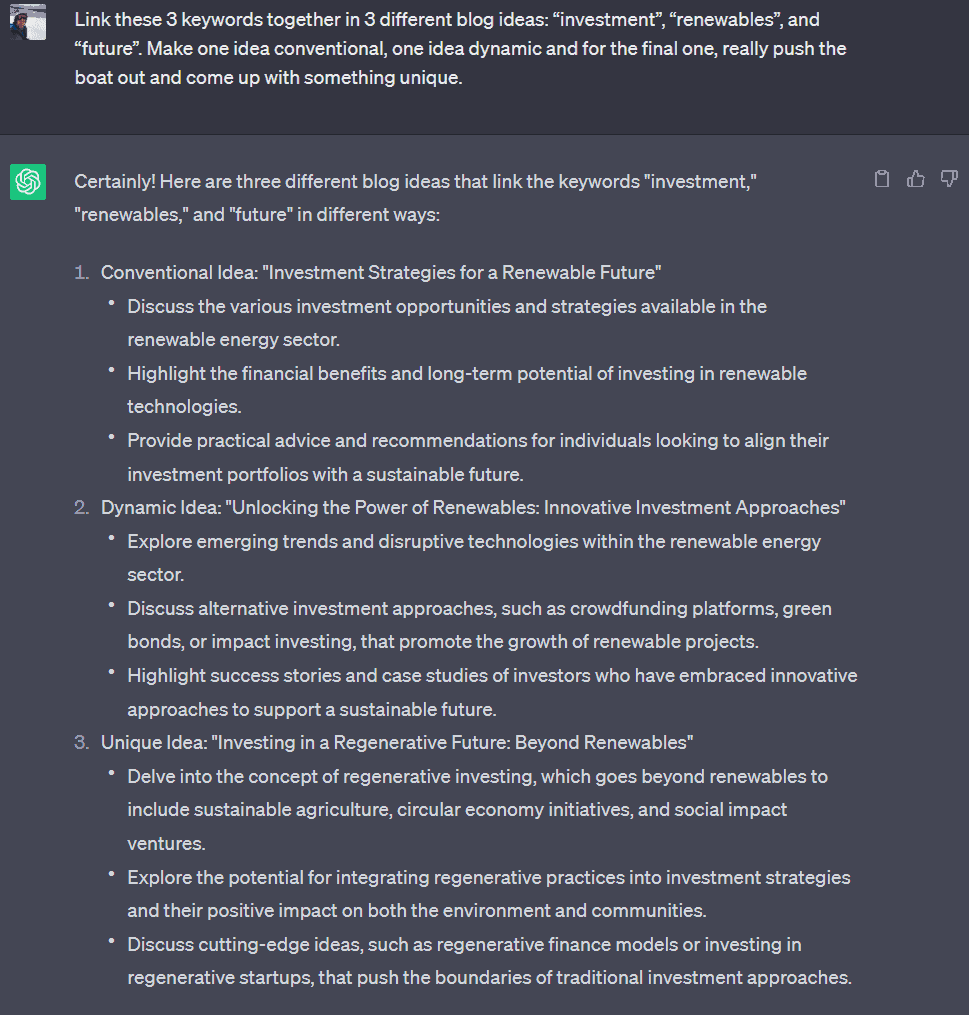
Step 2. Ask ChatGPT to compare and contrast
You’ll often find that you have more than one idea that speaks to you. If that’s the case, you can get ChatGPT to filter them and even recommend which one it believes is most likely to engage your audience.
| Example prompt: Put these ideas in a table [insert ideas]. List the pros and cons of each using bullet points. Then give each one a rating out of 100 for how relevant and engaging they are (explain why you’ve given them this rating in no more than two sentences). The audience you’re rating for is: [insert details of the audience]. |
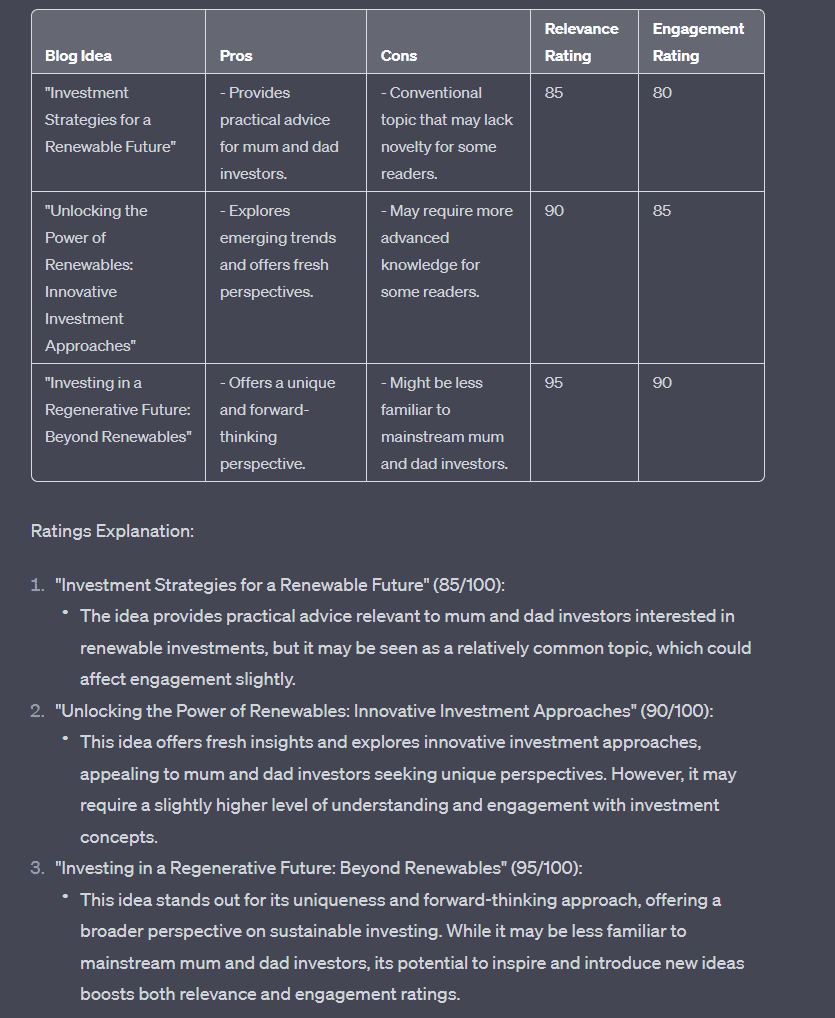
Step 3. Ask ChatGPT for an angle
Even after ChatGPT has helped you narrow down a topic to write about, you can still take it further by coming up with different angles. Again, I like asking for a range here, from conventional to unconventional.
| Example prompt: I am going to write the blog based on this idea: [Insert details]. Give me 6 different angles for it. Arrange them from most conventional to least conventional. At least 2 ideas should challenge conventional wisdom. |
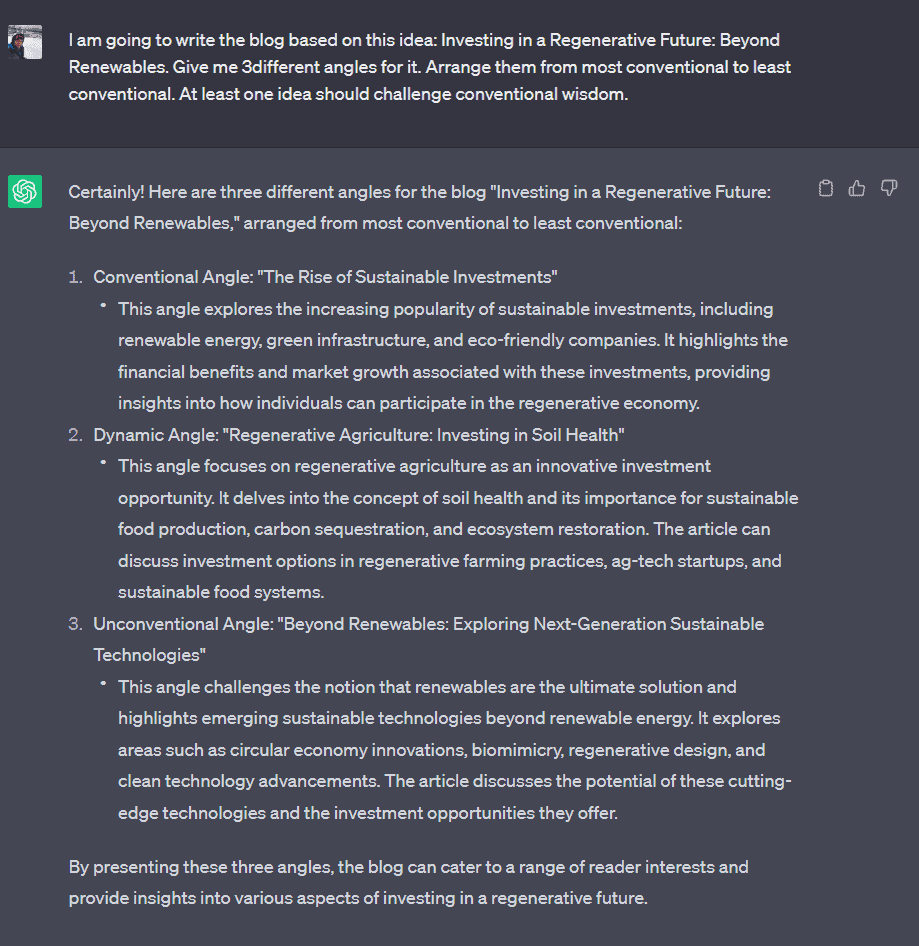
Step 4. Get ChatGPT to tell you what to include
At this stage, get ChatGPT to give you a summary of what you should include in your article. Be sure to ask it what data you also need to support each point. If you want to go further, you can even ask it where it thinks quotes would work too.
| Example prompt: Give me an outline for what this article should look like: [Insert article title]. You should use subheadings and bullet points for each section. Also, tell me where data should be used to back up a point. Give me recommendations for authoritative organisations or publications which publish this data. Finally, tell me where I should use quotes and give me an example of the kind of things they should say. |
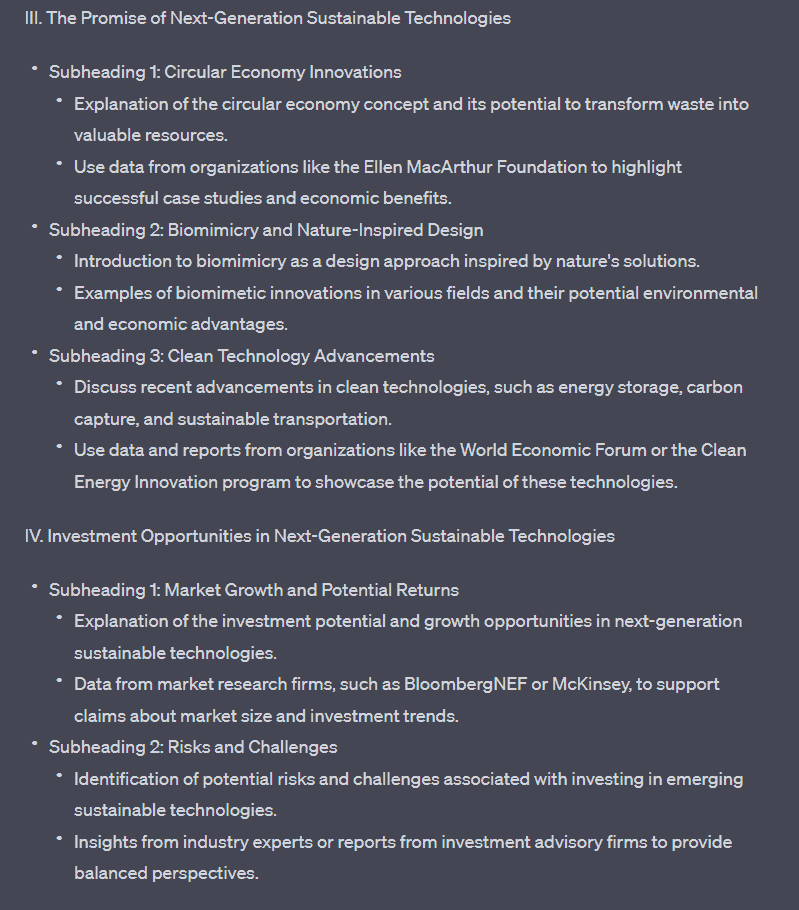
Step 5. Ask ChatGPT how you could improve
Your blog outline still probably won’t be perfect. But ChatGPT can still work hard to help you make it better. It will happily critique its own work and suggest shortcomings or omissions to make it even stronger.
| Example prompt: Go through this outline and tell me which points are strongest and which are weakest. If you find a weak point, tell me how it could be improved. (For instance, what is the counter-argument, and how would I defeat it?). Is anything missing that could be relevant? Should I update the outline to include it? Tell me why or why not? |
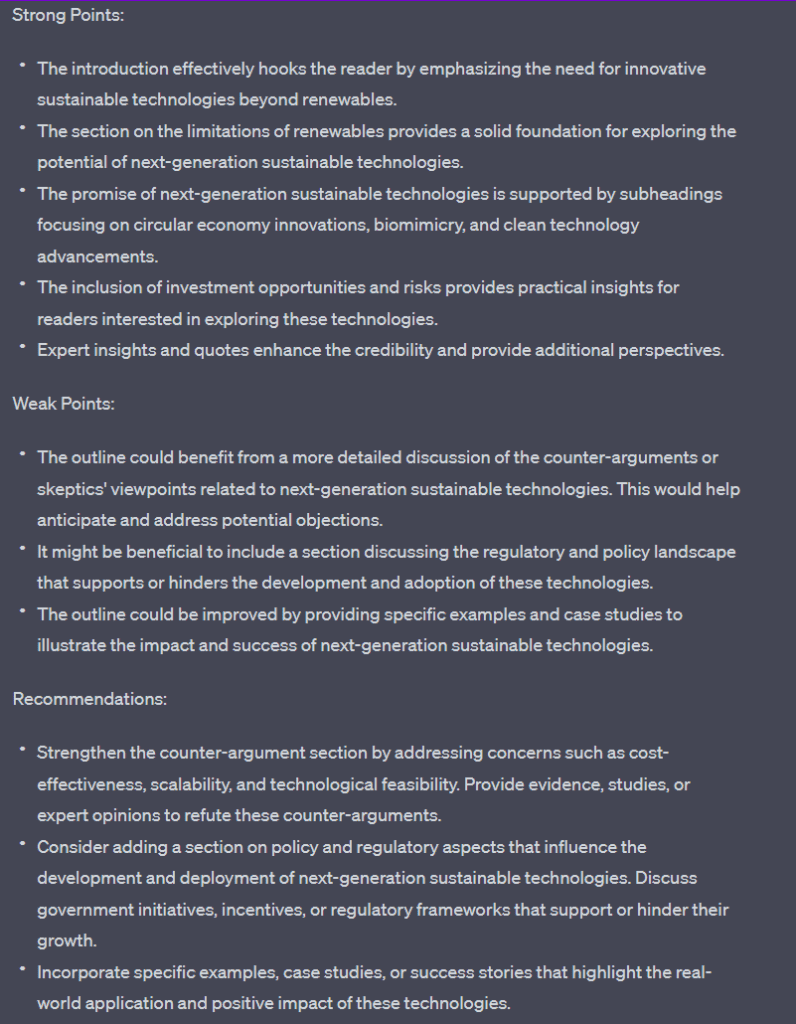
Step 6. Ask ChatGPT to rewrite based on its advice
More than likely, you’ll find that you what to add something ChatGPT has suggested. If that’s the case, ask it to rewrite the outline. Sometimes, I find when I ask ChatGPT why it didn’t include some relevant information; it tells me that it would have made the article too long. In that case, I think about including it as a box out.
| Example prompt: Rewrite your outline to include the following points: [Insert information]. Also, include a box out with the following point: [insert information]. |
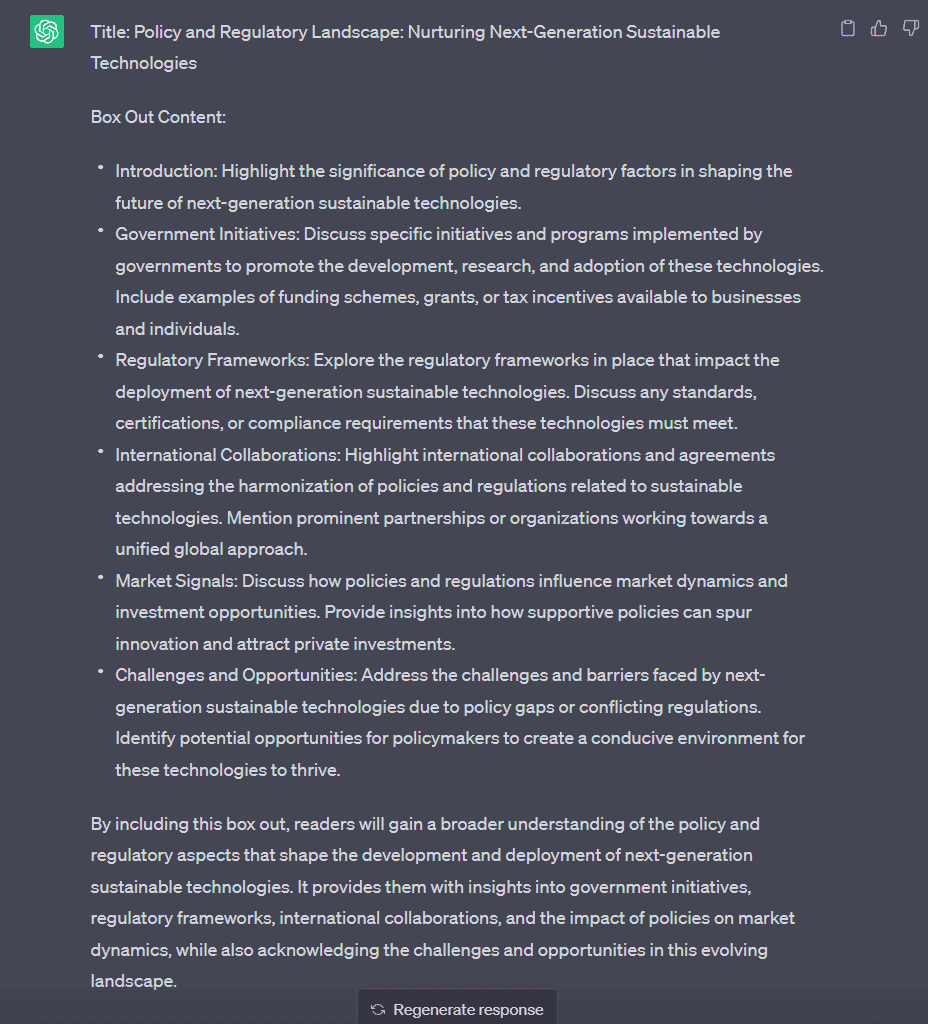
Step 7. Tell ChatGPT how you expect it to write
We’ve done a lot of preparation, but we’re still not ready to get the words down just yet. Before you ask ChatGPT to start writing, tell it exactly how you expect it to write. I do that by feeding it a short style guide that consists of 10 points I want it to follow. I call these ‘Antelope Media Style’ (the name of our content agency), and they cover things like writing at an 8th-grade level and using active voice.
You may want it to write in a different style – say, in the style of a publication like the NY Times or an author like Steven King. However you want it to write, be as specific as possible.
| Example prompt: I want you to imitate the style of The Economist to the best of your abilities. Never, ever deviate from this without good reason. Do you understand? If so, tell me what the style of The Economist is. |
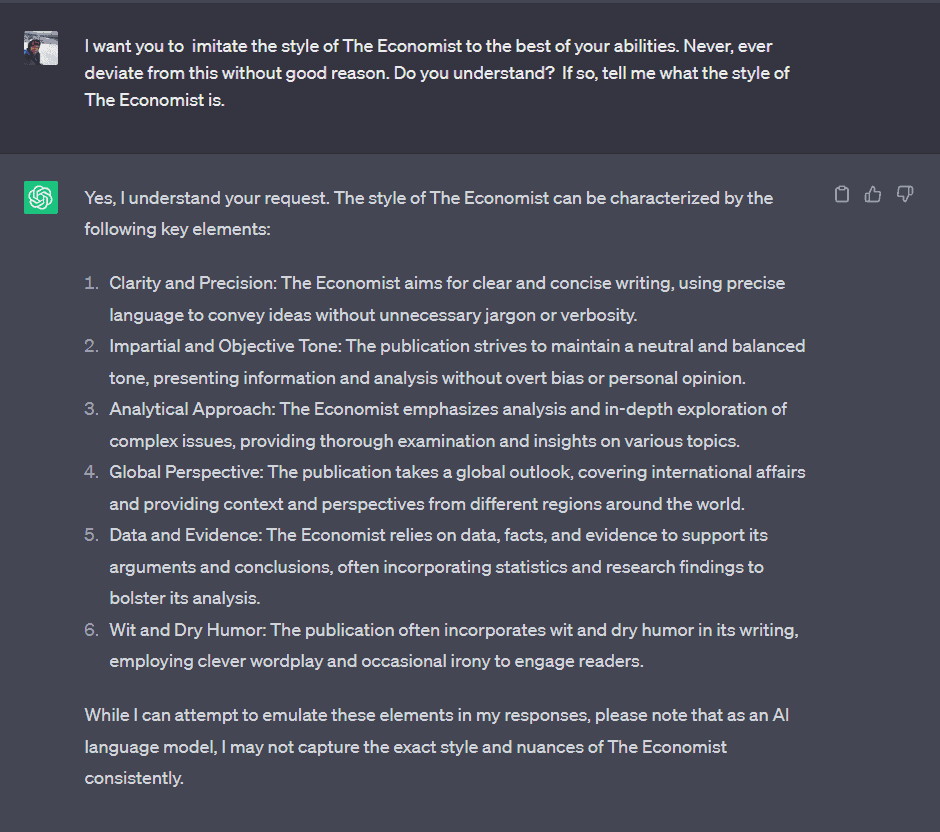
Step 8. Feed ChatGPT your outline
Now that you’ve primed ChatGPT, it’s time to feed it your outline. While you can do this in one hit, sometimes it makes more sense to feed your outline to ChatGPT section-by-section. That way, you can keep better control over it and make sure you’re getting what you want as you go.
| Example prompt: I’m going to feed you the outline section-by-section. Here is the first section. I want you to write it up now. [Insert details] |
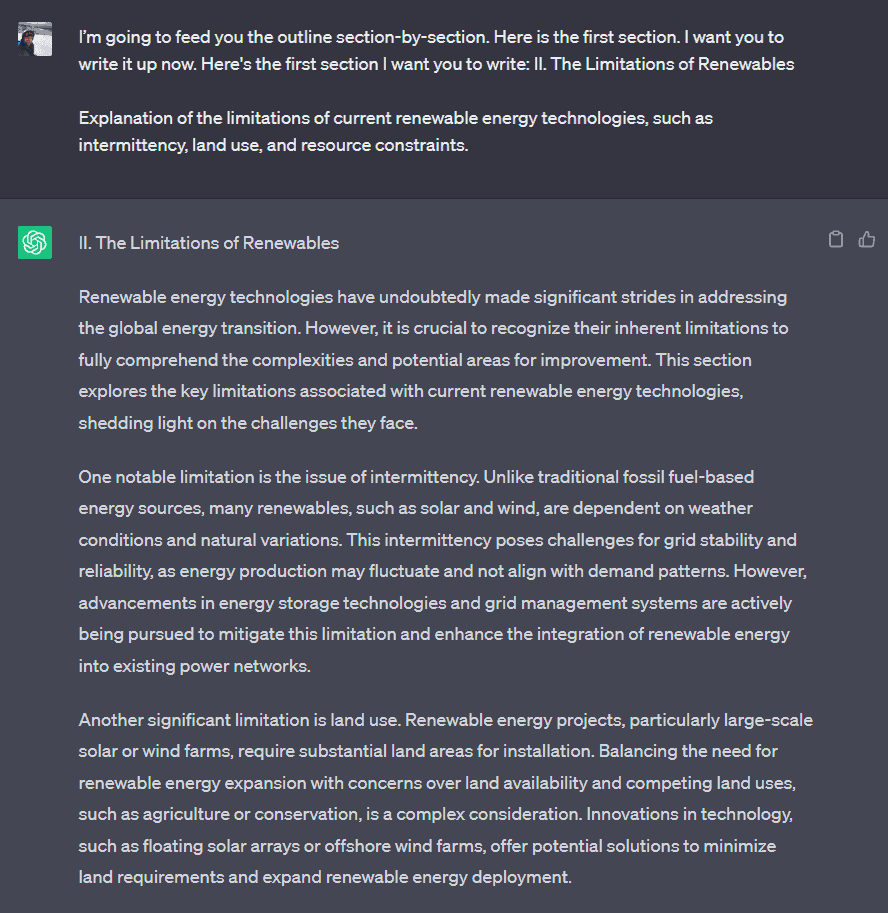
Step 9. Edit ChatGPT’s work
Now you have a first draft. Hooray. But it is only that – a first draft. You almost certainly won’t have something that’s professional quality just yet.
The good news is that ChatGPT can edit its own writing. In fact, I’ve already written a whole article about the techniques to use right here. The bad news is that this is likely to be the most hands-on you’ll have to get with it.
That’s because even with all the priming you’ve given it so far, ChatGPT still won’t produce perfect words. It’s likely to be too flowery and too verbose. It’s also likely to get the odd fact incorrect.
It’s your responsibility to hold ChatGPT to account and to get it to write well. Cut those adjectives and adverbs out. Get it writing in an active voice. And use your own judgement and skill until you get the words down the way you want them.
| Example prompt: Re-write this content using 75% as many words but without changing the meaning. Use active sentences. Cut adjectives and adverbs. Make sure you get straight to the point. |
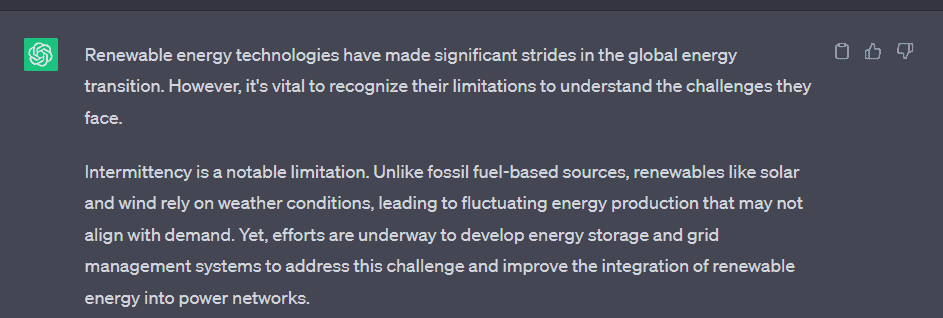
In conclusion….
Despite what some think, ChatGPT can write good blogs. In fact, it could become your indispensable blogging partner. However, you can’t just ask it to write something and expect it to produce good work.
If you’re prepared to go through these nine steps and put in a bit of brain power at your end, you can potentially get a better result in a much quicker time than you could without it.
Want more?
Discover three creative ways you can use ChatGPT to come up with better content ideas on our YouTube channel.

